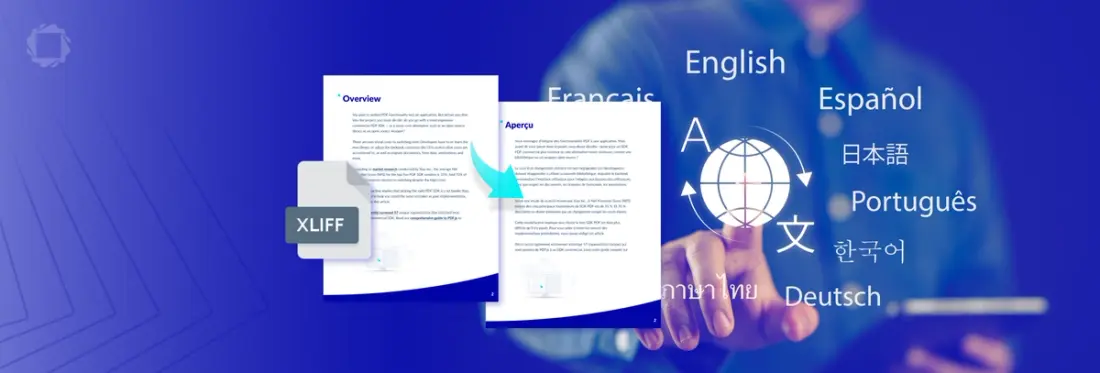Introducing XLIFF Reflow: The Smarter Way to Translate PDFs Without Losing Formatting
By Vimal Cherangattu | 2025 Apr 16

4 min
Tags
PDF SDK
Managing and editing PDFs in multiple languages has always been a challenge. If you have ever tried translating a PDF, you have likely encountered these issues:
- Text shifts out of place.
- Fonts break, making the document unreadable.
- Tables and layouts get distorted.
- Hours are wasted manually fixing formatting.
XLIFF Reflow, the latest update to PDF Editing for the Server SDK supports seamless multilingual PDF workflows by ensuring translated content reflows accurately without breaking structure, style, or compliance.
What is XLIFF Reflow?
XLIFF Reflow is designed to eliminate formatting headaches when translating PDFs. Instead of manually copy-pasting content and fixing layouts, XLIFF Reflow extracts text into XLIFF format, an industry-standard translation file that maintains:
Fonts, layouts, and tables – No more manual reformatting. Seamless integration with translation tools – Works with your existing workflow. Enterprise scalability – Ideal for financial institutions, manufacturers, and government agencies.
By ensuring translated content seamlessly reflows into the original design, XLIFF Reflow makes multilingual document management faster, more reliable, and completely automated.
How Does XLIFF Reflow Work?
Unlike traditional translation workflows that require manually extracting and reinserting text, XLIFF Reflow automates this process by converting text into XLIFF format, an industry-standard file type for translation workflows.
Step 1: Extract Text into XLIFF Format
XLIFF Reflow pulls all text from a PDF while preserving structure, fonts, and formatting.
The extracted text is stored in XLIFF, an XML-based format used for seamless integration with translation management systems (TMS).
Step 2: Translate Using Preferred Translation Tools
The XLIFF file can be processed with any machine translation system, computer-assisted translation (CAT) tool, or professional translation service.
The translated text remains structured and organized, ensuring compatibility with the original document layout.
Step 3: Reflow Translated Text Back into the PDF
Once the translation is completed, XLIFF Reflow reinserts the translated text into the original PDF while ensuring:
- Fonts, layouts, and tables remain intact.
- No manual post-translation formatting is needed.
- The document retains its original design in the new language.
- By handling text extraction and reflow, XLIFF Reflow eliminates formatting errors, making PDF translation workflows more efficient and automated.
Key Benefits of XLIFF Reflow
Supports Any Translation Workflow
XLIFF Reflow does not perform translations but integrates seamlessly with any system that supports XLIFF files, allowing enterprises to use their preferred translation tools.
Eliminates Post-Translation Formatting Issues
Traditional translation workflows often require extensive manual reformatting. XLIFF Reflow ensures that translated text fits back into place exactly as intended.
Saves Time and Reduces Costs
Organizations spend significant time and resources correcting formatting errors in translated PDFs. By automating reflow, XLIFF Reflow eliminates unnecessary rework, improving efficiency and reducing costs.
Ensures Compliance Across Global Markets
Legal, financial, and regulatory documents require strict formatting precision. XLIFF Reflow maintains document integrity, reducing the risk of errors in translated versions.
Who Benefits?
- Financial Institutions: Streamline multilingual compliance documents while preserving legal integrity.
- Manufacturers: Localize technical manuals and safety documents across regions with ease.
- Government Agencies: Digitize and translate archived documents while maintaining layout precision.
- Multinational Enterprises: Standardize branding and document formatting across multiple languages.
If you are looking to streamline multilingual document workflows and ensure formatting integrity in every language, let’s talk.
Tags
PDF SDK

Vimal Cherangattu
Share this post


